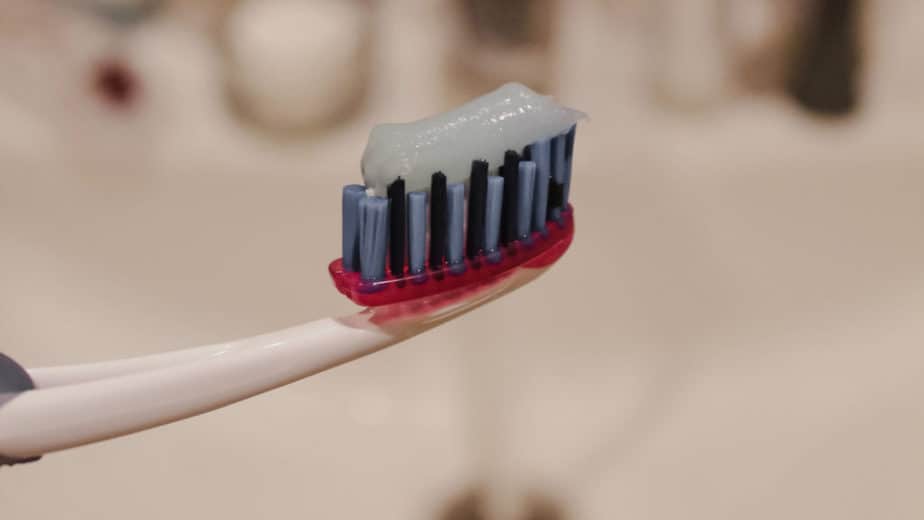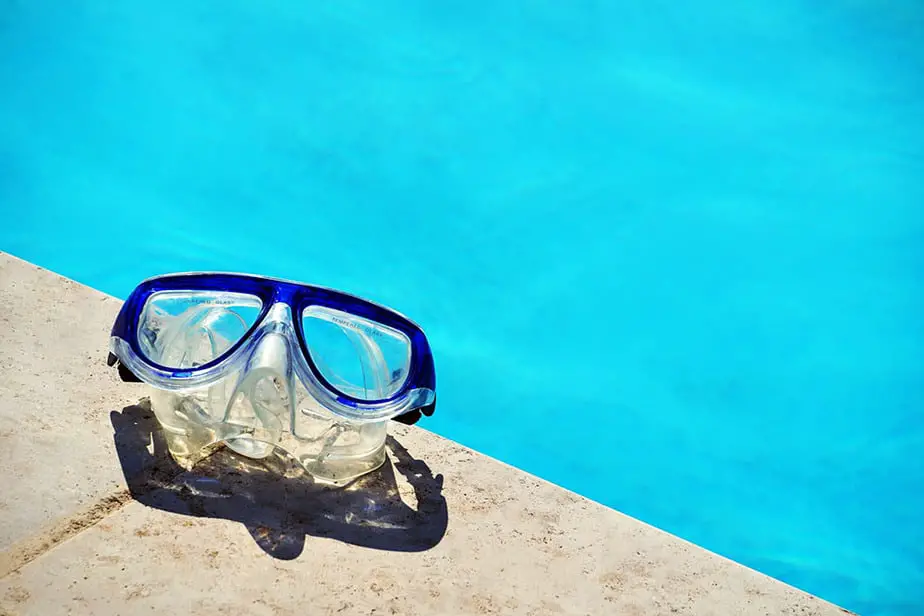You didn’t travel all the way to your favorite snorkeling destination only to have your vacation ruined by foggy swimming goggles or dive masks! Being unable to see clearly through your mask is not only annoying, it’s downright dangerous. When you’re out in the water, your vision is important not just for experiencing the beautiful sights, but also so you can see signals from your buddy or any dangers approaching.
With that said, there are a few methods you can try to keep your snorkel or scuba mask from fogging up. The most popular ways to keep your mask from fogging up are: rubbing toothpaste on the lens, rubbing baby shampoo, using anti fog products, or even burning your dive mask. Yes, that’s right, you can defog your mask with a lighter if you’re careful. Let’s go over each method in further detail below.
Steps To Keep Your Mask from Fogging
Step 0: Get A Properly-Fitting Mask
Actually, before we even get to the methods, we have to first ensure that you have a mask that fits your face properly. No amount of defogging tips and tricks will help you if the mask doesn’t even seal properly on your face.
When shopping for a snorkel mask, you need to consider your face size. For instance, if you are on the smaller side, then we recommend you look at these snorkel masks for small and narrow faces which will have a higher chance of sealing on your face.
Masks have a degree of adjustability thanks to the straps, but also consider looking at different brands and types of masks at various price ranges. If you can visit a dive shop in person to try out different masks, then that is probably the best option. If you are shopping for a mask online, then look at the customer reviews to get a feel for how the mask fits.
A quick test you can do to check the integrity of the mask’s seal is to gently hold it up to your face with just one finger and no straps, inhale through your nose, take your finger off the mask and see if it remains sticking on your face. If it falls off without any support, then the seal is not strong enough.
In order to get a strong seal, you should find a mask with a large skirt so that it has more surface area to stick on your face. Next, make sure that you do not have facial hair that is preventing the mask from sealing on your face.
Lastly, get a mask with a skirt that is comfortable, since this is something that you will be wearing for hours. Furthermore, look for a mask with either a clear skirt to increase your vision, or a black skirt to absorb the sun’s glare. You should expect to spend around $50-$100 for a solid dive mask with soft silicone skirt.
For more information on how to select a properly-fitting snorkel mask then click here.
Step 1: Defog Mask with Lighter
The first step is easily the scariest step because there is a chance you could ruin your newly purchased mask. You might be wondering why we need to burn the mask with a lighter. The reason is that brand new tempered glass lenses come with a protective silicone layer when it leaves the factory.
Keep in mind, this step only applies to masks with glass lenses; check if your mask has plastic or tempered glass lenses before proceeding. Masks with plastic lenses should skip to step 2. By burning off the silicone layer, you will drastically reduce the chances of your mask fogging up when you’re out in the water.
There are some individuals who are vehemently against defogging masks with a lighter, and honestly this depends on your risk tolerance. You run the risk of burning yourself or damaging your mask, so children should ask an adult to help them if possible. Personally, we can attest that this method is relatively safe, straightforward to do, and effective.
Lens Burning Tips
- Do NOT burn prescription or plastic lenses. This step applies only to glass lenses.
- Apply heat only to the inside of the lens; you do not need to worry about the outside.
- Keep the flame on the glass only and away from the silicone skirt.
- You’ll know when the protective coating has been burned off when the glass turns black.
- Take care not to burn yourself. Only use the lighter for 5 to 10 seconds at a time to give it time to cool down.
In addition to the lighter getting hot, of course the lens will also heat up. Once you’ve finished burning off the factory silicone layer, let the lens naturally cool down completely before moving to step 2. Hot glass is very sensitive and can suddenly crack when exposed to cold water, which you may be tempted to run it under to speed up the process.
Step 2: Clean with Toothpaste

You should regularly clean your snorkeling equipment, mask included. To clean your mask, scrub it using a toothbrush and toothpaste. The abrasives found in toothpaste will ensure any remaining factory coating will be scrubbed off.
Don’t use your fingers because the oils on your fingers can transfer onto the lens. Once you’ve thoroughly scrubbed the mask, rinse with hot water.
This is the basic way to clean your snorkel mask. Do this frequently, but especially before and after a snorkeling or diving session. For a new mask, do this multiple times before heading into the water with it.
If your snorkel mask has a plastic lens, then use dish soap and a soft brush or cloth instead of a toothbrush and toothpaste. That way, you won’t damage or otherwise leave scratches all over the plastic lens.
Step 3: Apply Anti-Fog or Baby Shampoo
Before you head out into the water, apply your preferred anti-fog product to prevent the mask from fogging up. We recommend you find a product that is biodegradable and reef-friendly so that it will not cause any contamination, such as the JAWS Quick Spit Anti Fog.
The instructions for each product may vary so read them carefully so that you can successfully prevent your mask from fogging. Store-bought anti-fog solutions are packaged in small bottles for convenience. They will fit in a BCD pocket and are easy to travel with.
An alternative anti-fog solution is to simply make a mild solution with about a dozen drops of baby shampoo mixed with a few ounces of water. Baby shampoo is recommended because it won’t harm your eyes, whereas other products may cause you to tear up.
To simplify the application process, you can mix the solution in a spray bottle and squirt as much as you need. Thoroughly spray the lens until it is completely covered in the solution and swish it around. Remember not to touch the lens with your finger because this can cause oils to transfer. Finally, do a quick rinse with fresh or saltwater.
Step 4: Put Your Mask on ASAP
The next step after shaking off all the water droplets is to wear the mask as soon as possible. You want as little moisture in the mask which can cause it to fog up. Keep your face as dry as you can and seal the mask tightly. Don’t clear your mask by exhaling unless you absolutely need to (this introduces moisture).
For the best results, wear a dry mask over a dry face and do your best not to remove the mask at all while in the water. Your mask should not fog up if you’ve done this correctly.
Step 5: If All Else Fails
Hopefully you won’t have to resort to this, but if you are out in the water and find that your mask is still fogging up, then spit in it and cover and make sure the lens is coated in your saliva. Again, don’t use your fingers, just keep spitting in it and swishing the saliva around. Dump the spit out and quickly wear the mask again.
This should typically fix the problem. If you are having trouble coating the lens with your spit, then mix it with some saltwater so that the glass can be coated. As gross as it may seem, spit is a great anti-fog solution and can be used as a last resort.
How Do You Keep a Full-Face Mask from Fogging?
If you believe all of the marketing, full face masks supposedly solve the fogging problem since the air flow runs across the mask lens when you inhale. However, we found that even full face masks can occasionally fog up. As such, you should apply the same cleaning steps outlined above.
However, since the lens is usually made of plastic, you should be extra careful not to scratch it which would only worsen the fogging problem. Furthermore, burning it is out of the question and using spit as your anti-fog solution is not ideal as you would have to coat a lot of surface area with spit. Read this article to learn more about full face masks.
Why Do Snorkel and Scuba Masks Fog Up?
You can prevent your snorkel mask from fogging if you know exactly what is happening. You might have noticed during winter when you have the heat on at home or in the car, the window will have condensation or fogging. The exact same phenomenon is occurring when your snorkel mask fogs up.
Essentially, when there is an extreme change in temperature between a cold and hot environment, such as when you’re underwater and then expose the mask to the sun when you surface, you will get condensation or fogging.
With this in mind, whenever you surface try to face away from the sun. This way, you can prevent the hothouse effect from heating up the air inside of your mask lens. When you plunge back into the cold water, by looking away from the sun you can further reduce the chances of fogging. Make it a habit not to sit up and talk unless you need to, and look away from the sun when putting your mask on.
Recap
Don’t let your vacation get ruined by a foggy mask! Whether you’re snorkeling or diving, you should learn the basic steps to clean and defog your mask.
To keep your mask from fogging, there are a few steps you should take before heading into the water. First, wear a properly fitted mask. It should seal tightly on your face and prevent moisture from entering.
Second, if the mask has a glass lens and it is not a prescription lens, consider burning the inside of the lens with a lighter to remove the silicone layer. You will know the silicone has been removed when it turns black. After letting it cool down, rinse with lukewarm water to get rid of any residue.
Third, scrub the mask using a toothbrush with toothpaste. The abrasives in the toothpaste will remove the rest of the residue as well as clean the lens. If your mask has a plastic lens, clean with dish soap and a soft brush or cloth. Do NOT use your fingers.
Fourth, dry the mask and wear it quickly! Don’t let any moisture enter and don’t look into the sun. Don’t exhale into the mask unless you need to.
Lastly, if you’re still experiencing condensation, spit can be used as a last-ditch attempt to keep the mask from fogging. Follow these steps, and you will surely notice an improvement in how clear your mask is when snorkeling.

